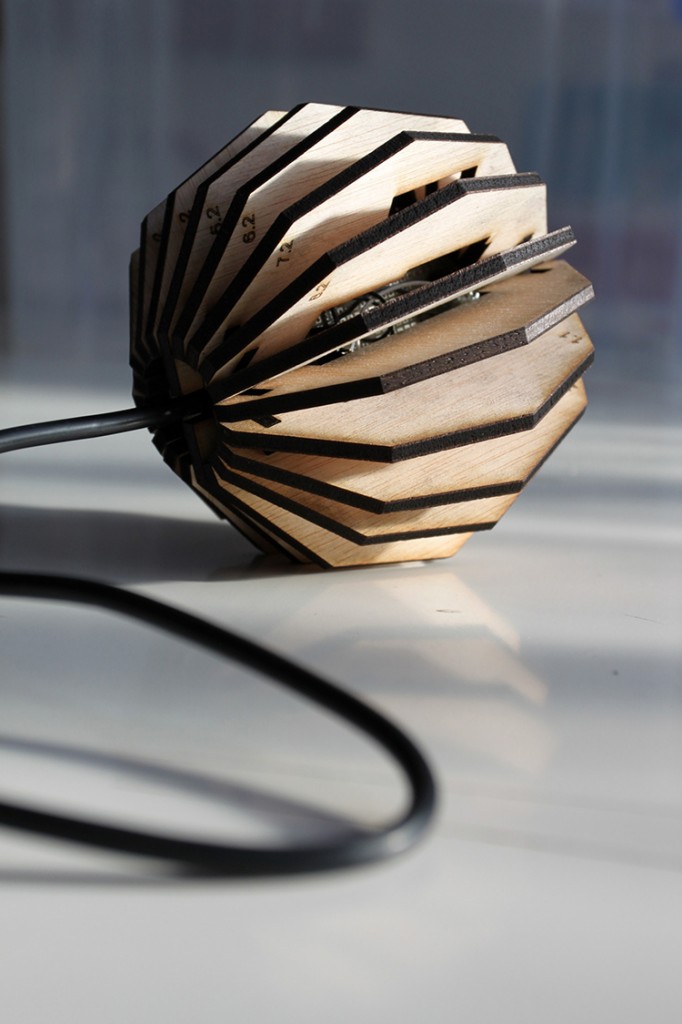what if sounds would be souvenirs instead of pictures?
idea Memories are something what brings back your experience received through senses. A bunch of reminiscence particles. Even though your experience was unique, it does not mean you will play it back same way every time you remember it. For me it somehow reminded kaleidoscope. When you place one handful of glass beads in the box and every time you spin it, mirrors translate same objects into different views. Kaleidoscope is perceptible by invoking visual sense. But what if instead of views use sounds from different places and make them as personal souvenirs? Finally, my idea was to create something what could help memorize places and experiences through sounds.
sound recording I made two recording sessions to capture sounds. The first test was made in the beach using iPhone voice memo application. For second recording in Ciutadella park i used professional recorder. All sounds were sorted in two groups:
- the ones which I was passing by. Chant in demonstration, pieces of conversations of passers-by, chatting kids, owner’s game with dogs etc).
- and the ones I was travelling with. Which prompts to places where I’ve been, what I was wearing or how I was travelling. I have recorded street noise, spinning bike wheels, my zipper’s ratlling, walking, birds’ chirping, lindy-hop dancing lesson, ping pong game etc.
properties of devices
- iPhone voice memo application. It was for first trial. I found these main advantages. small size of device, long lasting records, unlimited recording time, big memory, instant recording. Disadvantages: records are in mono, bad quality, noisy, very short recording distance.
- Mobile digital recorder. Advantages: stereo and very good audio quality. Disadvantages: short records, very short time for using battery, big gap between turning on the device and starting to record.
hardware
- Arduino fio
- input: accelerometer (x and y values)
- hardware is plugged to PC and uses it as an output.
software
arduino
- the base is code from cmps10 sensor.
- receiving data. For this I used only pitch and roll parameters (x and y). Compass sensor’s data sequence of rolling and pitching was reduced up to 9 values for each. And was applied to switch the sound. All values had to be translated into positive numbers. And sequence of numbers had to be continuous. (first printscreen)
- adding code to compile it with MAX6 msp (second printscreen)
- all using audio files had to be kept at the same folder. buffer~ is used to store audio files and groove~ to play them.
- MSP example “playbackWithLoops” was used as a base for programming and keeping sounds.
- received values from compass (pitch and roll) were linked to 2 preset bars. Which allowed to change audio files according to accelerometer’s positions.
bellow you can see printscreen of MaxMSP program with some explanations of main used commands
case I wanted to design case which would help to control sounds and predict their order. For this I chose multi surfaced sphere, where every surface represents one sound composition. I needed two prototypes (with some corrections) to achieve desired result.
- First prototype was to test the concept. It revealed that hardware inside must be placed in stable position, otherwise volume won’t function. Second important aspect was design solution to easily access hardware.
- Second prototype was designed as the same volume, but instead of surfaces I used edges. Surfaces were joined using gears at the top and bottom. Inner parts of pieces were adjusted to software’s shape in that way assembled case places and keeps hardware stable.
first prototype
second prototype
binding principle
final prototype









